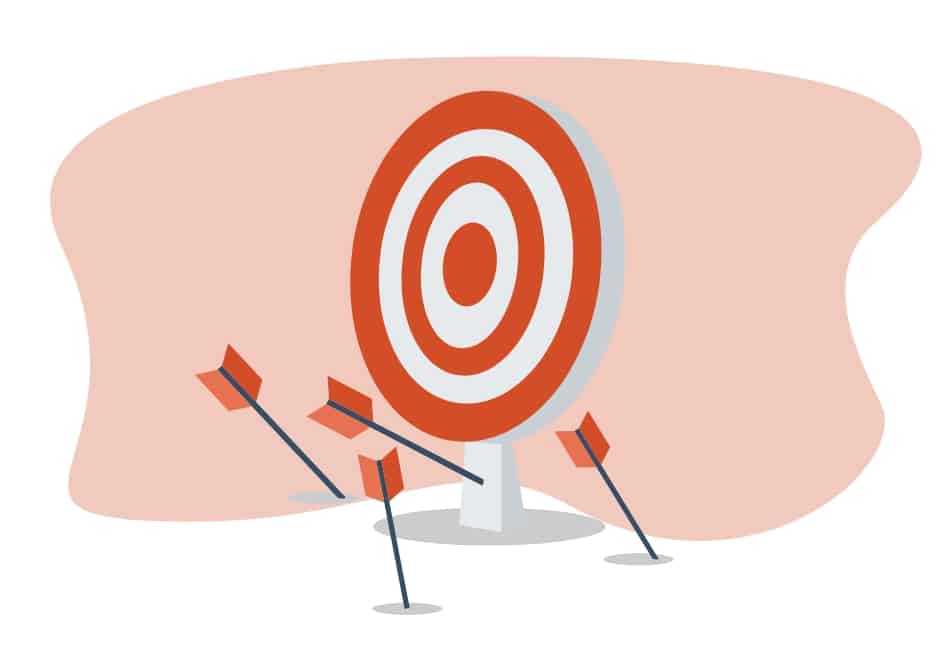- What is a positioning document?
- Why is positioning important?
- When to consider product positioning
- Who is responsible for product positioning?
- What should a product positioning document look like?
- How to develop a product positioning document?
- Example of product positioning document?
- Positioning mistakes to avoid
- Testing your product positioning statements
- Learn more about positioning strategy
How to Develop Product Positioning and Why It Matters
What is a
product positioning document?
Product positioning is more than a statement. It’s a process—a strategic activity—that will affect business decisions, from the products and services your company builds to the type of culture you want to have and the message you communicate to the market.
Product positioning is a document that focuses on conveying product value to buyers, resulting in a family of documents that—among other things—will drive all outbound communications. Yet in recent years, it seems as if positioning has devolved into a series of vague superlatives that convey nothing as they attempt to trick the customer into buying the product. But that’s not the purpose of product positioning, and it isn’t effective.
Rather, the best positioning documents clearly communicate how the product will solve specific customer problems. As an industry, we tend to wallow in technical jargon and assume that the reader can connect the specs to their problems. Or we hope that our salespeople can connect the dots for prospects. But this is unfair to both buyer and seller. Your product positioning document, and marketing materials and sales tools, should explain the value and use scenarios to support our promises.

Product positioning is a document that focuses on conveying product value to buyers
Why is positioning important?
Product positioning is all about finding and defining your product’s identity and communicating it internally so everyone is working from the same playbook. Sound product positioning has two main benefits. The one obvious to marketers is consistency in messaging. Each marketing and sales piece communicates exactly the same message. A less obvious benefit, but perhaps an even more important one, is that the positioning process forces you to identify and spell out clear benefits for each type of buyer. Without a clear message, most products are doomed to failure.
Here’s how the product positioning document affects the following teams:
- Engineering and development. Because they face many choices, the engineering and development team needs context and clarity about what they’re doing to make the right decisions. By clearly articulating what problems need to be solved and for whom, the technical team adds value to the development process. They also have the capacity to prioritize certain activities.
- Marketing and communications. In charge of writing external messaging, creating web content and producing advertisements, the marketing and communications team needs to understand the problems that the market wants to have solved. This way, they can highlight the product’s distinctive capability and connect with buyers.
- Sales. If the sales team knows why the product has been built and for whom, explaining to potential buyers how the product solves their problems and meets their needs becomes clearer. This allows the sales team to focus on the important benefits that will attract the technical buyer or the ROI that will appeal to the economic buyer, ultimately ensuring the loyalty of both.
When to consider product positioning
Product positioning should be done much earlier in the process than many companies do it. Many companies will do it just prior to preparing external messaging or product launch activities, or at the end of the process, when they’re getting ready to go to market.
At Pragmatic, we believe and teach that product positioning needs to happen in the beginning. In fact, we put it right up front before you even start going through the process to get approval from executives to apply resources to your new product. Think of positioning as your focus statement. How can you develop a product without first getting everyone on the same page about what problem the product should solve and for whom?
Who is responsible for product positioning?
Product positioning is a key element of product management, and positioning documents will define your product category, the problems it solves and the personas it serves. So it stands to reason that positioning should be the product team’s responsibility, although marketing and others should have a seat at the table as well. We recommend a committee of no more than six people work together on a positioning strategy. But ultimately, the product manager should own the activity.
Keep in mind that a product’s positioning statement lays out the who and the what and why this product is better than the alternatives. It defines a unique place in the buyer’s mind. It defines the product in the context of the problem.
Marketing can then leverage the foundational document to create messaging from which to create campaigns, sales tools, web pages and so on. In other words, product positioning is what we’ll say, and the messaging is how we’ll say it. In general, marketing owns messaging, while the product leader owns positioning.
What should a product positioning document look like?
Your product positioning documents should begin by defining the problem in the industry and outlining the ideal solution for the specific persona. Then, provide a short primary message (about 25 words), to capture the attention of your persona. This statement should emphasize the one thing you want that persona to know and remember.
Next, is a more detailed product description to give insight to the sales and development teams. Finally, describe the three to five problem-oriented capabilities that directly connect with how the persona talks about their problem.
People buy not businesses, but when it comes to buying complex products there might be several decision-makers in one organization. In these situations, we categorize buyers into three types: financial buyer, technical buyer and one or more functional buyers.
Each of these has a different primary goal and sees product information through a different lens. The functional buyers want to know how the features will make them improve their workflow. The financial buyer wants to know both the price and cost saving benefits (ROI). The technical buyer is primarily concerned with how the product will logistically fit in the already existing technology ecosystem at the company.
You must mold your message so that it’ll resonate with each buyer type. For example, a positioning document written for a salesperson should emphasize the features that reduce paperwork while the positioning document for the sales manager emphasizes the value of centralized territory data and so on.
How to develop a product positioning document
Product positioning is a strategic activity that requires above all a time investment. To start, try to dedicate one full work day. However, drafting your positioning statement documents might take a couple of days or even a couple of weeks. Just know, doing it right will help your organization better understand the product’s purpose and will align everyone’s efforts. In other words, don’t rush it.
Market position is about occupying space in your customers’ minds. It is a way for prospective customers to understand your brand so they can categorize you. More importantly, it’s a way for your team to better understand your prospects and the position your company will play in their lives.
Here are the steps:
Step 1: Problem Statement
Begin the work by focusing on this prompt: “There is a problem in the industry today…”
Your answer to this thought exercise should be based in fact. There is no benefit in making up problems. Instead, it’ll result in building products no one will buy. An excellent problem statement will cover all the challenges your persona faces.
The problem statement should also feature empathy for the persona. You need to clearly know why they should care about solving the problem in the first place.
A cautionary note: fight the urge to weave your solution into this section of the document. Save that for step two.
Step 2: Solution
The next prompt to guide this work is: “The ideal solution to this problem is…”
Be sure you write this in the voice of the persona. Remove the industry or company jargon because you might start crafting messaging that lacks meaning to the audience, and it’ll all be sourced from the positioning document.
In this section, it’s critical to stay focused on what the ideal solution will do to solve the overall problem. It should not not focus on how your product will solve the overall problem.
Finally, your solution section should be clear and specific so it’s clear what the product should accomplish.
Step 3: The Positioning Statement
This statement is how you plan on capturing the attention of your persona. The goal is that your persona will be able to quickly and clearly understand your message. It’s the one thing you want them to know and remember.
A positioning statement is not a
- List of features
- List of benefits
- Complicated explanation of how your product works
Make it short. Make it sweet. Most importantly, get to the point.
The goal is to have a problem statement with 25 words or fewer. It’s a challenge that requires you to ruthlessly cut content, leaving you with only the most important information.
Step 4: The Product Description
Now it’s time to talk about your product and what it does, but still keep the work concise. In fact, we recommend 50 words or fewer.
While that can seem impossible at first, keep in mind that this information is going to be critical for your sales and development teams and they might not have a lot of time to read a lengthy document. So, to do this work and keep it concise you’ll focus on how your product is the right solution.
Step 5: Problem-Oriented Capabilities
To identify problem-oriented capabilities, you have to start with problems.
Here’s how:
- Write down all the problems your product solves for the persona your building your positioning document for. Use first-person language as the persona and be as detailed as possible.
- Group the problems together by theme. Usually three or four different groups.
The problem oriented capability is the solution or antidote to the problem group.
Ideally, the way you structure your problem-oriented capability mirrors the way the persona talks about their problem. This means you should eliminate any jargon your persona wouldn’t use. Most customers only care about what your product will do to solve their problems, and that’s what the product-oriented capability tells them.
What customers rarely care about is how your product works.
You’ll create a problem-oriented capability for each of your problem groups.

Product positioning is a strategic activity that requires above all a time investment
Examples of product positioning document
While it can be difficult to understand the process of product positioning, it’s much easier to spot it in the wild. Let’s bring this entire process to life with an example:
Problem Statement:
There is a problem in the industry today. Working women (Sarah) who care for small children struggle to find the time to plan meals for the week for their family.
Solution:
Sarah: “The ideal solution is if someone could just do the meal planning for me so I don’t have to think about this chore.”
Positioning Statement
For Sarah, the working mom, the app eliminates the need for meal planning by curating a menu based on her family’s preferences each week.
Product Description
Family Food Calendar is an app that curates weekly recipes for users based on their current preferences. It also connects users’ accounts to their preferred grocery store and orders the necessary ingredients for either pickup or delivery. Think Stitchfix but for dinner.
Problem-Oriented Capabilities
Family Food Calendar is an app that curates weekly recipes for users based on their current preferences. It also connects users’ accounts to their preferred grocery store and orders the necessary ingredients for either pickup or delivery. Think Stitchfix but for dinner.
Problem-Oriented Capabilities
- The app chooses recipes that can use similar ingredients throughout the week to cut down on costs.
- The app connects to accounts at their preferred grocery store, so they don’t have ingredients mailed.
- The app recommends new recipes based on past preferences to prevent fatigue with current meal options.
- The app utilizes periodic surveys to refine preferences so the experience gets better over time
Positioning mistakes to avoid
By now you know the importance of getting product positioning right. But what could derail you? Here are some top product positioning mistakes to avoid:
- Insincerity. Much of the writing we see in marketing materials seems obscure due to insincerity. Don’t try to fool the reader into thinking your product is more important than it is, or that your product solves problems better than the competition when it doesn’t really. If your product is clearly inferior, you cannot fix it with positioning. A product must be adequate for the market need in order to succeed; no amount of marketing can overcome it.
- Not focusing on the buyer. Remember, you need to tailor your product positioning to each individual customer segment. What resonates with one type of buyer won’t with another. Don’t expect a one-size-fits-all approach to work.
- Trying to be everything to everyone. Even if Tesla’s customers started asking for the company to release a gas-powered vehicle, they’re not going to. It’s just not what they do. And that’s OK. You’ll never be everything to everyone, so don’t try to be in your position.
- Speaking specs instead of solving problems. In most cases, customers don’t care about specs. They care about what those specs are going to do for them. Even technical audiences are more likely to respond to product positioning that’s aimed at their needs as opposed to the latest and greatest specs. You can always make that information available secondarily.
Testing your product positioning statements
Once you’ve created your positioning statements, you’re done, right? Not so fast. Product positioning should be done early—and revisited often to ensure your positioning statements are working.
How do you determine that? By asking your market segments two questions:
- When you think of [company/product], what are the first words that come to mind?
- What value do you believe [company/product] delivers to you and your organization?
Win/loss interviews with people who considered—or didn’t consider—your product will provide you with those answers. If you have an active win/loss program, simply add those two questions; if you don’t have a win/loss program, now is a good time to start one. Collect the data and evaluate it to confirm that your message resonates with each market segment. If it doesn’t, you need to make some changes.
Learn more about positioning strategy
Defining your market position is one of the most important steps you’ll take in product management. Learn more about how to write rock-solid positioning statements in Pragmatic Institute’s Foundations today.





